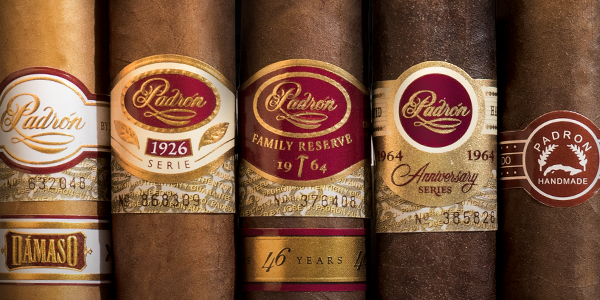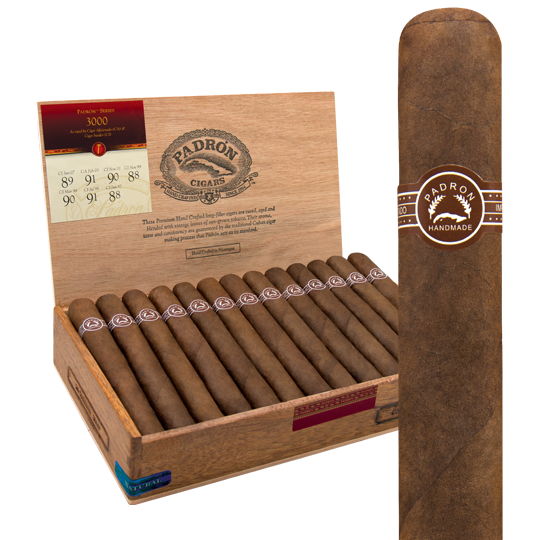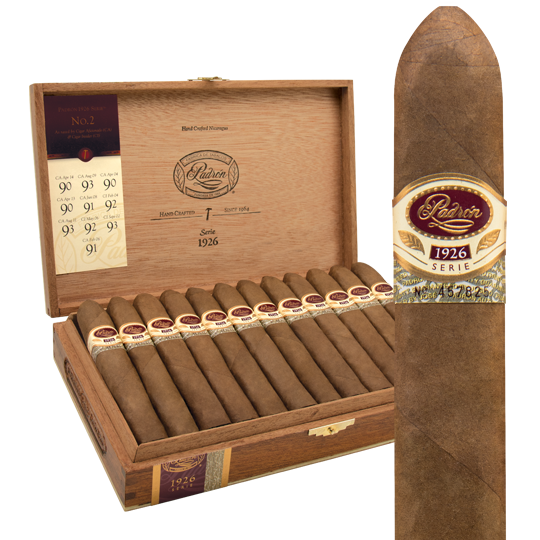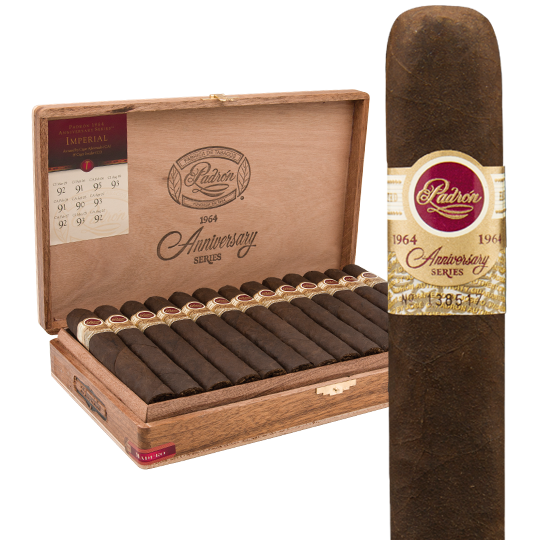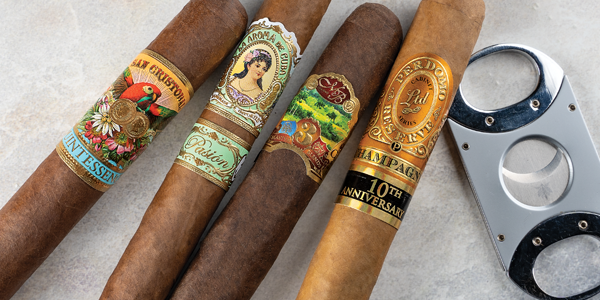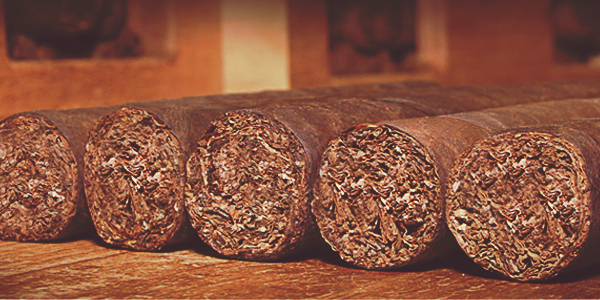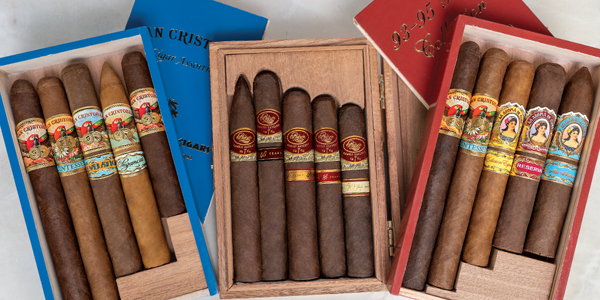History of Padrón Cigars
On the Padrón website is a detailed glimpse into the life of José Orlando Padrón, the company’s patriarch who passed away in December of 2017. Perhaps his story is the most telling insight of what Padrón cigars are about, a direct reflection of the cigar maker. While that is true of almost any brand, the relationship is no stronger anywhere than at Padrón.
Dámaso Padrón, José Orlando’s grandfather, immigrated as a young boy to Cuba from the Canary Islands, Spain, in the mid-1800s. He worked in the tobacco fields of Pinar del Rio. With a little bit of money, the family bought a small farm. They cultivated tobacco and kept buying farms in Pinar del Rio, adding a factory in the town of Piloto. That is where Piloto Cigars, the official name of Padrón Cigars, comes from. José Orlando was born in 1926 (that’s where the 1926 series of cigars gets its name) and worked in the family business. In 1961, the family farm was nationalized by the Castro regime. José Orlando first went to Spain, then New York, before finally settling in Miami in 1962.
Piloto Cigars was founded in 1964 (where the 1964 line of cigars gets its name), two years after José Orlando arrived in the United States, another member of the Cuban cigar exile club. José Orlando was always fond of telling the story of ‘el martillito,’ or the ‘little hammer,’ to explain how Padrón cigars came to be.
“In 1962, I arrived in Miami, an unknown city in a foreign land. I had to start from zero,” José Orlando is quoted as saying on the company’s website. “At first, I received $60 monthly, as government aid given to Cuban refugees. I was 36 years old, strong, and in good health. Every time I cashed that check, I felt like a burden on the country that had taken me in. For many days, I looked for a job and could not find one.”
José Orlando was determined to support his family and open a cigar business. A friend asked if he had any carpentry skills. José Orlando said he did. The friend gave him a small hammer “which he asked me to put to good use.” The work done with that ‘martillito’ allowed José Orlando to save $600. With that, Padrón Cigars opened in 1964.
The hammer is the foundational tale for a family that has carried on the tradition of its patriarch. Today, Jorge Padrón heads up the family business, working with his brother Orly, and continues to pass along the lessons of the little hammer story.
“The hammer has a deep and special meaning for the Padrón family,” Jorge explained. The story stands for “tenacity, integrity, perseverance, loyalty, commitment to quality, and much more.” These same qualities are seen in the cigars the Padrón family makes.
José Orlando began producing about 200 cigars a day in Miami with only one roller and later made the ‘fuma,’ a cigar with a curly head cap, similar to the traditional ones made in Cuba. This one was made entirely from Connecticut Broadleaf tobacco, which José Orlando soon found very limiting given the long curing process. José Orlando was approached by a representative of a tobacco company in Nicaragua who was seeking potential buyers. José Orlando liked the Nicaraguan tobacco and arranged to visit the fields in the Jalapa valley of Nicaragua. He said of Nicaragua that it was ‘the second coming of Cuba’ in terms of cigar tobacco. He began using the Nicaraguan tobacco in 1967 and quickly could not meet the demands of his customers. The company moved to Estelí, Nicaragua, in 1970, in the middle of the nascent Sandinista revolution. By 1978, the civil war was in full swing and the Padrón factory was burned down. Rebuilding began almost immediately, but at the same time, another factory was established across Nicaragua’s northern border in Honduras. After the Sandinistas triumphed, business was interrupted until José Orlando met with the new government and received assurances there would be no interference.
José Orlando was busy in 1978 with Cuba as well. He, along with other prominent Cubans living in the United States, entered into ‘el dialogo,’ or dialogue, with the Castro government in an effort to gain the release of political prisoners in Cuba. To make a long story short, the effort resulted in the release of 3,600 political prisoners. For José Orlando, the ramifications of meeting with Fidel Castro and being photographed doing so, even having given Fidel a Padrón cigar, became violent. The anti-Castro community in Miami saw José Orlando as a traitor instead of a hero for having negotiated with the devil. Padrón’s Miami facilities were bombed three times between July 26, 1979, the anniversary of the Castro revolution, (an earlier bomb in March had failed to explode) and 1983. A new factory and headquarters has since been built.
Problems continued with Nicaragua when the US embargo against the country in 1985 stopped the import of Nicaraguan products. In the five days before the embargo took effect, Padrón moved production to Honduras and as much tobacco and cigars as possible to Tampa, receiving an extension to continue to do so for another six months. The embargo ended in 1990 when the Sandinistas lost the elections.
José Orlando would travel constantly from Miami to Estelí. He would begin tasting cigars – occasionally enveloping a cigar that he was smoking with a different wrapper leaf – upon waking early and would not stop until going to bed. He continued to believe in Nicaragua, growing his own tobacco, opening a new factory in Estelí in 2003 that was twice the size of the old one. This became the 17th building owned by Padrón in Estelí, making a total of more than 75,000 square feet of space mostly dedicated to storage of about six years’ worth of production, or more than 25 million cigars.
Through all the troubles and political turmoil, José Orlando never took his eye, or nose, away from the cigars. He would initially determine the quality of cured tobacco leaves by sticking his face into the leaf and taking in a deep smell. If it was up to standard, he would say, ‘Tiene buena nariz.’ (‘It has good nose.’) The result is a variety of excellence that we all enjoy today.
Padrón makes only its own cigars in four series with numerous shapes. Padrón is the first, followed by the 1964 Anniversary, the 1926 Series, and the Padrón Family Reserve. All but the Padrón are box-pressed. Occasionally, Padrón makes a special release that commemorates a significant family date or event. More recently, Padrón created the ‘Dámaso’ line with a milder flavor profile. Padrón’s Maduro cigars are widely appreciated for their consistency and complexity. Padrón cigars have been named the cigar of the year four times by Cigar Aficionado and have consistently been among the top 25.
In the Padrón line, my choice is the 3000, a 5 x 52 Robusto (about $6.50) that packs a medium-full flavor. The 7000 fills that large cigar niche that is hugely popular today. At 6.25 x 60 and less than $9, the Maduro delivers an amazing profile of cedar, nuts, leather and cocoa.
The Padrón 1964 Anniversary Principe is a bit more expensive at $10, but is among the most power-packed flavor bomb you can find in a small package. It’s 4.5 x 46, Natural or Maduro, all Nicaraguan tobacco with dark, earthy flavor at the front followed by creaminess and leather notes. The Maduro adds some sweet chocolate as a bonus. The Natural has a distinctive cedar component. The Anniversary series offers more than a dozen shapes, among which the Belicoso, 5 x 52 and about $14, is sure to become a favorite.
Is there anything tastier than a Padrón 1926 Series Torpedo? At 5.5 x 52, $18, this is a sophisticated blend of great Nicaraguan tobaccos that delivers rich, earthy notes that carry throughout, accented by lots of spice, leather, nuts and cocoa. The #35 is that after-lunch cigar that you DO have time for at 4 x 48 and about $12. Explore the subtle difference between the Padrón 1964 Anniversary vs. the 1926 Series.
The Padrón Family Reserve is a cigar that makes you feel like you’re part of royalty. So elegant and boldly flavored with notes of cocoa and coffee and a long cedary finish. The 45 Years is, I think, the way to experience this line if you have not had it before. The Maduro version was Cigar Aficionado’s top pick in 2009. It’s 6 x 52 at about $27. Most recently, the 50 Years has captured every aficionado’s imagination. This 5 x 54 Toro is about $25 and gets so much better after a little time in your humidor. Among the special releases, you have to give the limited-production 80 Years a try. It’s an amazing looking perfecto, 6.75 x 54, about $32, and a smoke that will draw great smoke and envy from your friends.
The Dámaso should not be overlooked. The wrapper is Ecuador Connecticut around Nicaraguan tobaccos. After tweaking the original mild blend and adding a version with a little more pop (the red label No. 32 and No. 34), this is a great morning cigar or one to have your rookie friends check out. Start with the Robusto, 5 x 50, at about $13.
If you haven’t had a Padrón cigar and aren’t sure where to begin with such a tempting portfolio, check out one of the many Padron samplers available. You can experience a number of sizes in a single blend, or try blends in one assortment.
One last note. If everything old is new again, then it’s no surprise that in 2018 in Nicaragua, Padrón and all cigar makers face uncertainty as many citizens of Nicaragua protest the Ortega government. National strikes interrupted cigar shipments and, given the nation’s turbulent politics, it looks like Padrón will have to navigate these waters for a while. Fortunately, this is a company that treats its employees well and has a long commitment to being the best.

